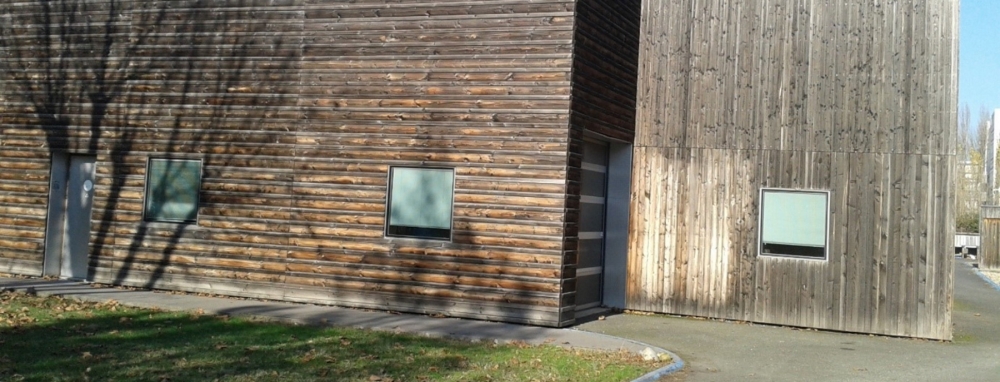Aesthetics and performance
Contents |
[edit] Introduction
Aesthetics is a branch of philosophy concerning studies on the nature and expression of beauty or taste.
The aesthetics of a building is one of the principal aspects considered in architecture. The appeal of a building covers the combined effects of a building’s shape, size, texture, colour, balance, unity, movement, emphasis, contrast, symmetry, proportion, space, alignment, pattern, decoration, culture and context. The unique properties and natural beauty of wood and other bio-based materials make them desired for various applications including construction, facades and interior design.
A building should be designed in order to satisfy requirements regarding safety, serviceability, durability, but also, aesthetics, assuring proper structural performance through the entire service life. For that reason, it is essential to understand the overall deterioration mechanisms within the different levels of a building including elements, components, façades and for the entire building. Changes in the appearance of materials can differ due to kinetics of the responses related to the material resistance as well as due to intensity of the degrading factors.
[edit] Aesthetics and performance
In general, there are diverse processes that affect the aesthetical performance of building elements through their service lives:
- Weathering is predominantly related to the superficial level deterioration and its intensity depends on micro-climatic conditions. For example, wood that is exposed to exterior weather conditions starts to change its appearance within a few hours.
- Decay is a biotic degradation process affecting both a material’s functionality and aesthetics. For example, decay might have different kinetics depending on the type of fungi causing it, and consequently it can affect a materials’ functionality and appearance in diverse ways.
- Waterlogging is a slow deterioration process in anaerobic conditions due to the activity of bacteria. Insect activity might also have significant influences on the outlook of biomaterials, as well as on the material’s functionality and safety.
Other processes/hazards that can influence the appearance of building materials are impossible to forecast during designing phase. These include acts of vandalism, fire, flood, storms or earthquakes, among the others. Even if not directly predictable, all these other processes/hazards should be considered while designing a building.
[edit] Critical limits
It is relatively simple to properly define the critical limits for when wood is losing its technical characteristics (due to decay, decrease in mechanical strength, loss of dimensional tolerances, etc.). It is extremely difficult, however, to define the critical limits related to aesthetics. In the real cases, the aesthetic requirement limits states are reached before functional loss and far before passing the safety limits.
The choice of building materials requires considerations of combined aesthetic appeal, investment and maintenance costs and the environmental impact. It is especially important for indigenous material availability, its impact on the environment, ability to reuse, recycle or dispose at the end of its life. Very often, materials used in construction must be compatible with the specific local, cultural and aesthetic circumstances. The choice of building materials is culturally dependent, and it varies within a social context. Material selections are also legally limited by the building codes, including constrains on the type, shape or size of elements.
[edit] Fashion
An important aspect that should not be neglected while designing buildings is the awareness of the current trends or fashions to use certain types of materials. In this case motivation for façade replacements will not be dependent on their in-service performance but will be rather triggered by personal motivation to follow specific styles.
The perception of aesthetical quality and related awareness of “beauty” has changed over the ages and will continue to change in future. However, there are some universal attributes that are perceived as attractive for the built environment. For a building to become remarkable, requires knowledgeable implementation of materials that are compatible within the local context. Wood and other bio-based building materials are certainly an attractive resource for the modern construction sector, however confidence regarding their proper selection, use and maintenance should be based on profound know-how and best practices shared between architects, designers, investors and builders.
[edit] Related projects
The CLICKdesign project will help increase market confidence with users for selecting wood as a reliable product and enhance an optimised performance of timber in the built environment.
This article originally appeared as ‘Aesthetics in architecture – how beauty and design are inspiring each other’. It was written by Anna and Jakub Sandak and published by BRE and can be seen on the BRE website.
[edit] Related articles on Designing Buildings Wiki
Featured articles and news
Infrastructure that connect the physical and digital domains.
Harnessing robotics and AI in challenging environments
The key to nuclear decommissioning and fusion engineering.
BSRIA announces Lisa Ashworth as new CEO
Tasked with furthering BSRIA’s impressive growth ambitions.
Public buildings get half a million energy efficiency boost
£557 million to switch to cleaner heating and save on energy.
CIOB launches pre-election manifesto
Outlining potential future policies for the next government.
Grenfell Tower Inquiry announcement
Phase 2 hearings come to a close and the final report due in September.
Progress from Parts L, F and O: A whitepaper, one year on.
A replicated study to understand the opinion of practitioners.
ECA announces new president 2024
Electrical engineer and business leader Stuart Smith.
A distinct type of countryside that should be celebrated.
Should Part O be extended to existing buildings?
EAC brands heatwave adaptation a missed opportunity.
Definition of Statutory in workplace and facilities management
Established by IWFM, BESA, CIBSE and BSRIA.
Tackling the transition from traditional heating systems
59% lack the necessary information and confidence to switch.
The general election and the construction industry
As PM, Rishi Sunak announces July 4 date for an election.
Eco apprenticeships continue help grow green workforce
A year after being recognised at the King's coronation.
Permitted development rights for agricultural buildings
The changes coming into effect as of May 21, 2024.























